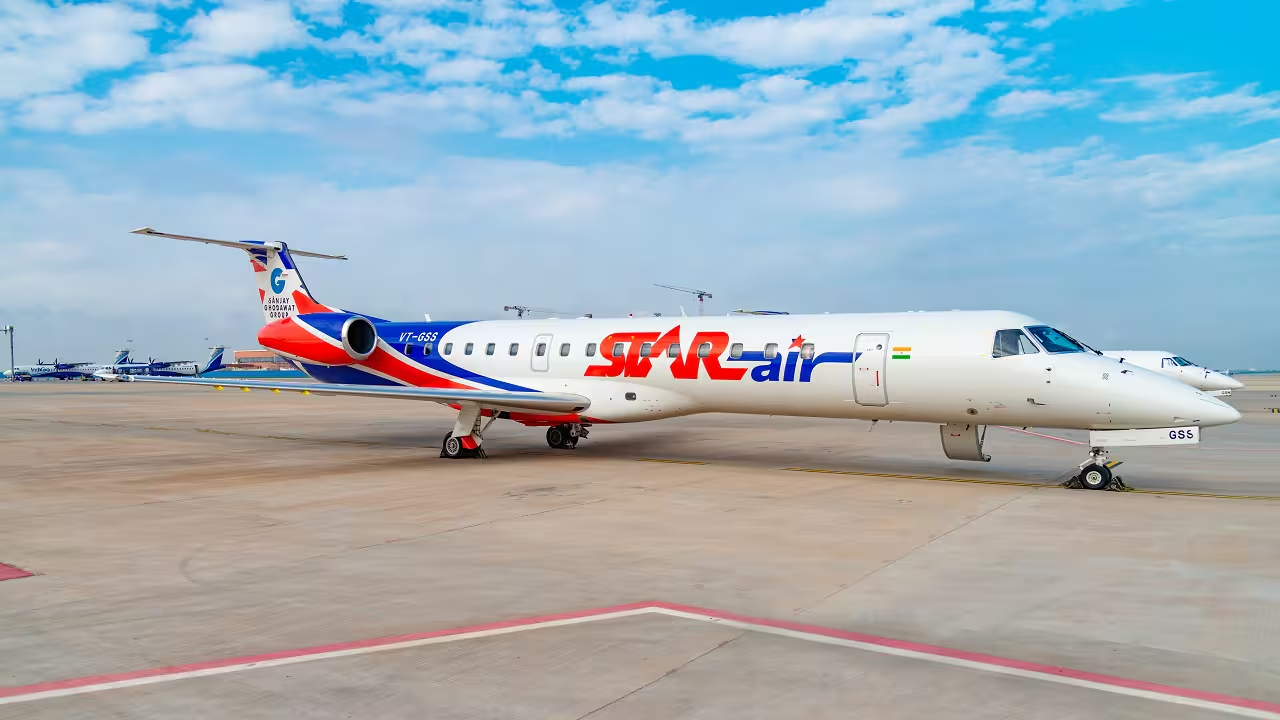The Indian aviation sector is experiencing a meteoric rise, with the potential to become a future superpower. Fueled by a growing economy, a burgeoning middle class, and ambitious government initiatives, India’s skies are becoming increasingly crowded with passengers and cargo.
Passenger Boom:
- Passenger traffic in India is expected to reach a staggering 1.1 billion by 2030, a more than three-fold increase from 2020 figures of around 350 million, according to a report by CAPA India [Civil Aviation Partener Association]. This growth surpasses the global average of 4.3% projected by IATA (International Air Transport Association) and places India among the fastest-growing aviation markets.
- Low-cost carriers (LCCs) are at the forefront of this surge, making air travel more accessible to the ever-expanding middle class. LCCs like IndiGo and SpiceJet now account for over 60% of the Indian domestic market share, up from just 35% in 2010, as reported by DGCA (Directorate General of Civil Aviation).
Fleet Expansion:
- Indian airlines are on a massive aircraft acquisition spree. Domestic carriers have placed orders for over 1,000 new airplanes, a clear indicator of their confidence in the future of Indian aviation. IndiGo alone has placed an order for 500 Airbus A320neo family aircraft, the largest single order by an airline in aviation history according to Airbus. SpiceJet has ordered 200 MAX aircraft from Boeing, aiming to modernize its fleet.
- This influx of new aircraft will not only cater to the growing demand but also modernize aging fleets, improving fuel efficiency and passenger experience. New generation aircraft like the A320neo and MAX offer significant fuel savings compared to older models.
Infrastructure Development:
- The Indian government is heavily invested in developing world-class aviation infrastructure. This includes the construction of new airports, expansion of existing ones, and upgrades to air traffic control systems. The Ministry of Civil Aviation aims to increase the number of operational airports in India from 148 in 2023 to 220 by 2025 [Invest India].
- The ambitious Regional Connectivity Scheme (RCS) – UDAN (Ude Desh Ka Aam Nagrik) aims to connect smaller cities and towns with air services at affordable fares. Launched in 2016, the scheme has already operationalized over 85 new airports and routes, promoting balanced regional growth and tourism.
Manufacturing Ambitions:
- India aspires to become a major player in aircraft manufacturing. The government’s “Make in India” initiative encourages foreign investment and partnerships to establish domestic production facilities. In 2019, Mahindra Aerospace signed a joint venture with Airbus to manufacture helicopter parts in India [Invest India].
- This push for self-sufficiency could not only create jobs and boost the economy but also reduce dependence on foreign aircraft manufacturers. A robust domestic manufacturing ecosystem would also contribute to skill development and technology transfer.
Challenges and Opportunities:
- Despite the impressive growth, India faces several challenges. These include airspace congestion, skilled manpower shortage, high fuel taxes, and airline profitability concerns.
- Airspace congestion is a major issue, particularly around major metro airports like Delhi and Mumbai. The government is investing in new air traffic control systems and airspace optimization techniques to address this challenge.
- The Indian aviation sector faces a shortage of skilled pilots, technicians, and other aviation professionals. The government and industry bodies are working together to bridge this gap by establishing new training institutes and skill development programs.
- High fuel taxes contribute significantly to airline operating costs in India. While the government has taken some steps to reduce fuel taxes, further rationalization is needed to improve airline profitability.
Global Impact:
- The rise of Indian aviation will have significant global implications. As a major buyer of aircraft and aviation services, India will hold greater bargaining power with international manufacturers. Indian airlines are expected to account for a significant portion of future global aircraft demand, giving them leverage in negotiations with Boeing and Airbus.
- Additionally, India’s emergence as a major aviation hub will create new trade and investment opportunities, further strengthening its position in the global economy. Improved air connectivity will facilitate faster movement of goods and people, boosting international trade and tourism.
The Future of Indian Aviation:
The Indian aviation sector is poised for continued growth and transformation. With a supportive government, a booming economy, and a rapidly growing passenger base, India has all the ingredients to become a true aviation superpower. Overcoming present challenges and capitalizing on its vast potential will determine the speed and scale of India’





